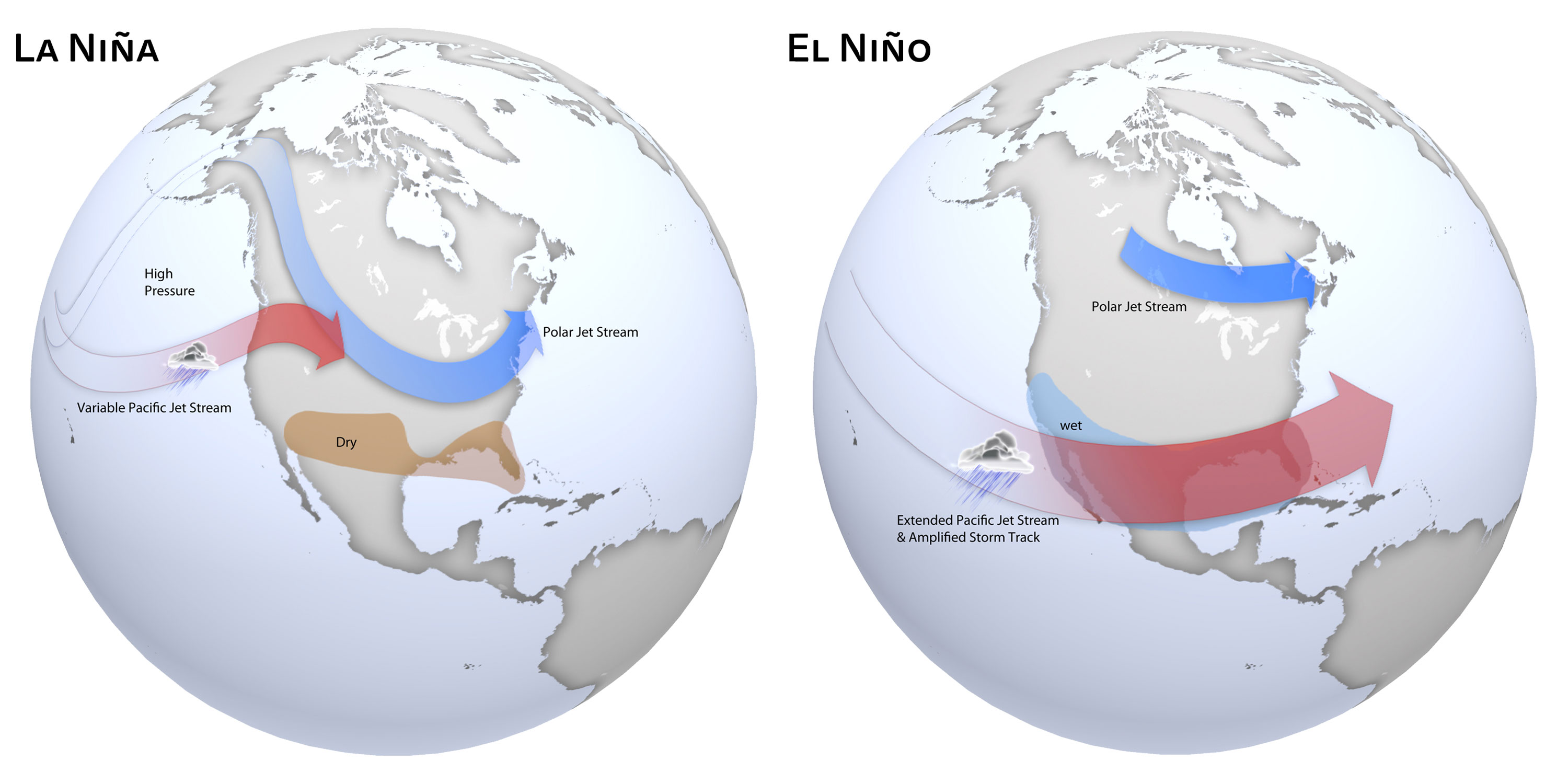El Nino And La Nina
El Nino And La Nina

1) What months and/or seasons do we typically experience the effects of El Nino and La Nina? (0.75 pt)
El Niño and La Niña events typically affect weather patterns globally, albeit in different ways. Here’s a general outline of when these effects are commonly felt:
El Niño:
-
- El Niño events typically develop during the late fall or winter in the Northern Hemisphere (October to December) and peak during the winter months (December to February).
- Effects of El Niño can persist into the early spring months of the following year.
La Niña:
-
- La Niña events also typically develop during the late fall or winter in the Northern Hemisphere.
- They can peak during the winter months (December to February) but may persist into the spring.
- La Niña events can sometimes follow El Niño events, though not always immediately.
2) What are the predicted chances (according to scientists) that we will experience the effects of El Nino and/or La Nina from this point forward and for the next several months? Have we experienced El Nino and/or La Nina effects in the recent past (within one year)? (0.75 pt)
3) Describe and contrast the basic conditions of the Pacific Ocean, and what basically causes these conditions, that lead to El Nino and La Nina events. (2 pts)
Basic Conditions of the Pacific Ocean
Normal Conditions (Neutral ENSO):
Under normal conditions, trade winds blow from east to west across the tropical Pacific, pushing warm surface waters towards the western Pacific (near Indonesia and Australia).
This results in cooler waters upwelling along the western coast of South America (Peru and Ecuador), creating a temperature gradient across the equatorial Pacific Ocean.
El Niño Conditions:
During an El Niño event, there is a weakening or reversal of the trade winds.
This weakening reduces the upwelling of cold water along the South American coast and allows the warm surface waters accumulated in the western Pacific to flow eastward towards the central and eastern Pacific.
As a result, sea surface temperatures (SSTs) become significantly warmer than average in the central and eastern Pacific, particularly near the coast of South America.
This change in SST patterns alters atmospheric circulation patterns globally, impacting weather and climate in various regions.
La Niña Conditions:
In contrast, during a La Niña event, the trade winds strengthen, enhancing the normal pattern.
This intensification increases the upwelling of cold water along the South American coast, leading to cooler than average SSTs in the central and eastern Pacific.
La Niña events are characterized by cooler waters in the central and eastern Pacific, which also affect global atmospheric circulation patterns but in different ways compared to El Niño.
Causes of El Niño and La Niña Events
Ocean-Atmosphere Coupling: The interactions between the ocean and the atmosphere in the tropical Pacific are crucial for the development of El Niño and La Niña. Changes in sea surface temperatures influence atmospheric circulation, which in turn affects ocean currents and temperatures.
Southern Oscillation: The atmospheric component of ENSO, known as the Southern Oscillation, involves changes in atmospheric pressure patterns over the tropical Pacific. During El Niño, the Southern Oscillation Index (SOI) tends to be negative, indicating a weakening of the normal east-west pressure gradient. During La Niña, the SOI tends to be positive, indicating a strengthening of this gradient.
Triggering Mechanisms: The initial triggers for El Niño or La Niña events can vary, but they often involve interactions between oceanic and atmospheric conditions. These triggers can include changes in sea surface temperature patterns, shifts in wind patterns, or changes in the distribution of warm and cold water masses in the Pacific Ocean.
El Niño and La Niña events are fundamentally driven by changes in sea surface temperatures and atmospheric pressure patterns in the tropical Pacific Ocean. These changes disrupt normal climate patterns globally, influencing weather phenomena such as rainfall patterns, droughts, and temperature anomalies in different regions around the world.
4) What are the basic weather/climatic effects both El Nino and La Nina may cause across the United States? Address each basic region of the U.S. (the NW, SW, MW, NE, and SE). (2 pts)
5) List at least two sources of information/references you used to research your answers. Be sure to properly cite the references as per MLA or APA guidelines for purposes of clarity. (0.5 pts)
References



